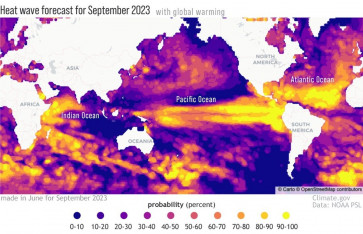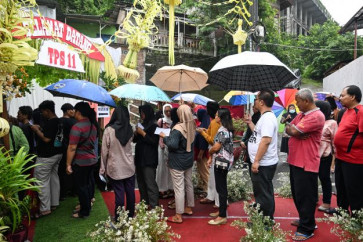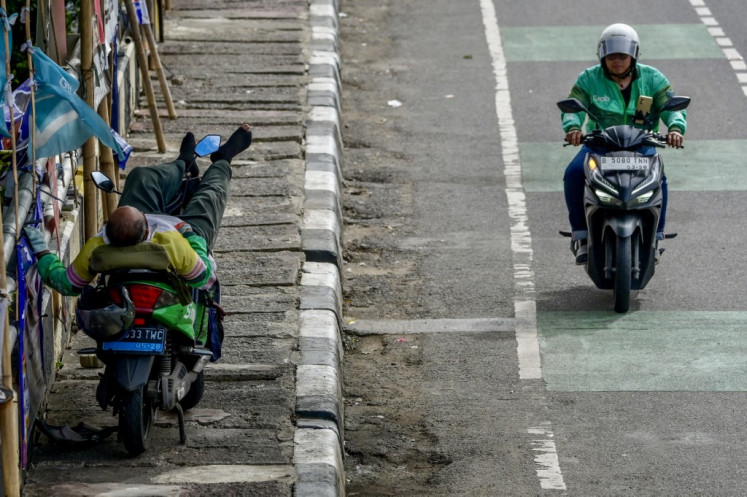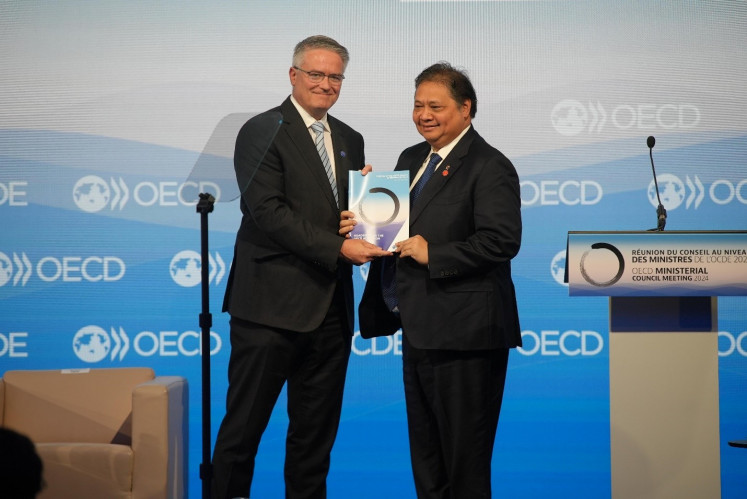Death in paradise: Stop business as usual in Papua
The recent news about the malnutrition and measles outbreak that caused the deaths of over 65 children in Asmat, Papua, stood in stark irony with news about Indonesia’s rice self-sufficiency
Change Size

T
he recent news about the malnutrition and measles outbreak that caused the deaths of over 65 children in Asmat, Papua, stood in stark irony with news about Indonesia’s rice self-sufficiency. It showed how Papuan infants begin their journey into life on a treacherous and life-threatening path.
The national and local governments stated they had been aware of the calamity since September 2017, yet it took four months to realize the effects of mounting fatalities. Despite the instant response, in a few months’ time, after the emergency status is downgraded, it’s going to become business as usual again.
Between May and August 2017, 38 Yahukimo residents died due to illnesses such as diarrhea or coughing. In 2013, 61 locals died in the regency near Asmat, and another 113 in 2009 because of similar reasons, apart from a reportedly failed harvest. Why do people die so easily from such preventable diseases in 21st century Indonesia?
The latest statistics show that nationwide coverage of measles immunization of children under five barely reached 71 percent in 2016, even lower than during the 1998 monetary crisis. The proportion once peaked in 2014 to 80.06 percent, but since then continued to decline to 70.67 percent in 2017.
According to the World Health Organization, nationwide immunity can only be reached when immunization coverage reaches 95 percent—yet Indonesia is moving backward. Last year, WHO data showed regencies with 95 percent measles vaccination declined from 45 percent in 2013 to 35 percent in 2015. Asmat regency itself only managed 17.3 percent immunization coverage for measles between January to July 2017. Was the outbreak really a surprise?
Malnutrition is no news either. One third of Indonesian children under five are stunted, a syndrome of malnourishment during their developmental stages. Infectious diseases like measles are more harmful for the malnourished. Health Ministry data last year showed the proportion of malnutrition and undernourished of children under five were 3.4 and 14.4 percent, respectively, nationwide. Provinces like East Nusa Tenggara, West Kalimantan and Maluku have more than double the national proportion of malnourished children. About a fifth of children in these provinces, in addition to Central Kalimantan and West Papua, are undernourished. While official data might be much lower because of underreporting, the proportion of malnutrition and undernourished children in Papua is slightly better than the national level, i.e. at 3.2 percent and 11.9 percent respectively. However, the death toll has always been higher.
The health outcome is resultant of many different aspects. As Asmat regency lies on coastal lowland and swampy rainforest, airborne and waterborne diseases spread more rapidly compared to other areas. Some locals still live a seminomadic life, fishing and gathering sago in the forest, a lifestyle that has barely changed since the introduction of the “modern” way of life by outsiders in the 1950s.
After integration with Indonesia in the 1960s, the people’s diet changed. Resources such as fish and forest produce were depleted, and rituals and the roles of traditional leaders changed, including their concept of health and healing, which were replaced by “modern” concepts, including reliance on modern medicine and health services.
A “business as usual” approach to such problems would see local governments crying for emergency funds from Jakarta every time news breaks out that locals are dying and being evacuated to hospitals.
But it is not an emergency—it’s a protracted situation. National and local governments need to go the extra mile because difficult geography hinders residents’ access to health services, as well as health workers’ access to monitoring and surveillance.
The Health Ministry has programs like providing airborne community health services or Puskesmas keliling perairan (community health centers catering to coastal communities), yet they often lack health workers, or seminomadic locals may not know how or when to access them. Therefore, a suitable system to monitor and respond to people’s health conditions should be developed in consultation with the local people.
Health practitioners who are sent to areas with special characteristics must have the skills, knowledge and capacity to work effectively across cultures, and must be rewarded generously to attract them to stay. At least two different approaches are urgent to prevent more tragedy.
First, the short-term, technocratic approach. As a lack of medical workers are partially blamed for low immunization coverage, public services need a stick-and-carrot approach. Like the method of former Jakarta governor Basuki “Ahok” Tjahaja Purnama, public officials paid with public money should be rewarded generously if they perform, and punished if they don’t, moreso if they are corrupt.
Supervision should be prioritized: Extra work needs extra money in extra-difficult terrain. This gargantuan task needs strong local leadership. Papuans must be encouraged to vote for smart and high-integrity local leaders, capable of working in highly complex situations. As stars of decentralization have emerged—including former mayor and governor President Joko “Jokowi” Widodo—other such “stars” will surely surface in Indonesia’s easternmost part.
Second, for a medium- and longer-term approach, research is needed on the local society’s lifestyle, belief systems and other nontechnical studies. The government might pour huge budgets into vaccinations, bed nets and construction of latrines, hospitals and other infrastructure, just to find that locals don’t know how to use them or have different beliefs or preferences about such things. The role of medical anthropologists or sociologists, for example, must be strengthened in regions with particular characteristics, as a one-size-fits-all approach would not work.
A study by the Institute of Resource Governance and Social Change in Timor for instance, shows that despite decades of effort to make Atoni people, an ethnic group in rural West Timor with Melanesian roots, adopt a “modern latrine” concept, they still practice open defecation. A study confirmed that while Indonesians prefer wet latrines where water is a must, the Atoni prefer dry latrines similar to European culture.
Indeed, Papua has been given the status of Special Autonomy Region, but it is not sufficient. The central and local governments must know the ropes.
________________________
The writer is a research fellow at the Institute of Resource Governance and Social Change, Kupang, and a social policy researcher at Perkumpulan Prakarsa, Jakarta, who is pursuing her PhD at the School of Social and Political Science, the University of Melbourne, Australia.









